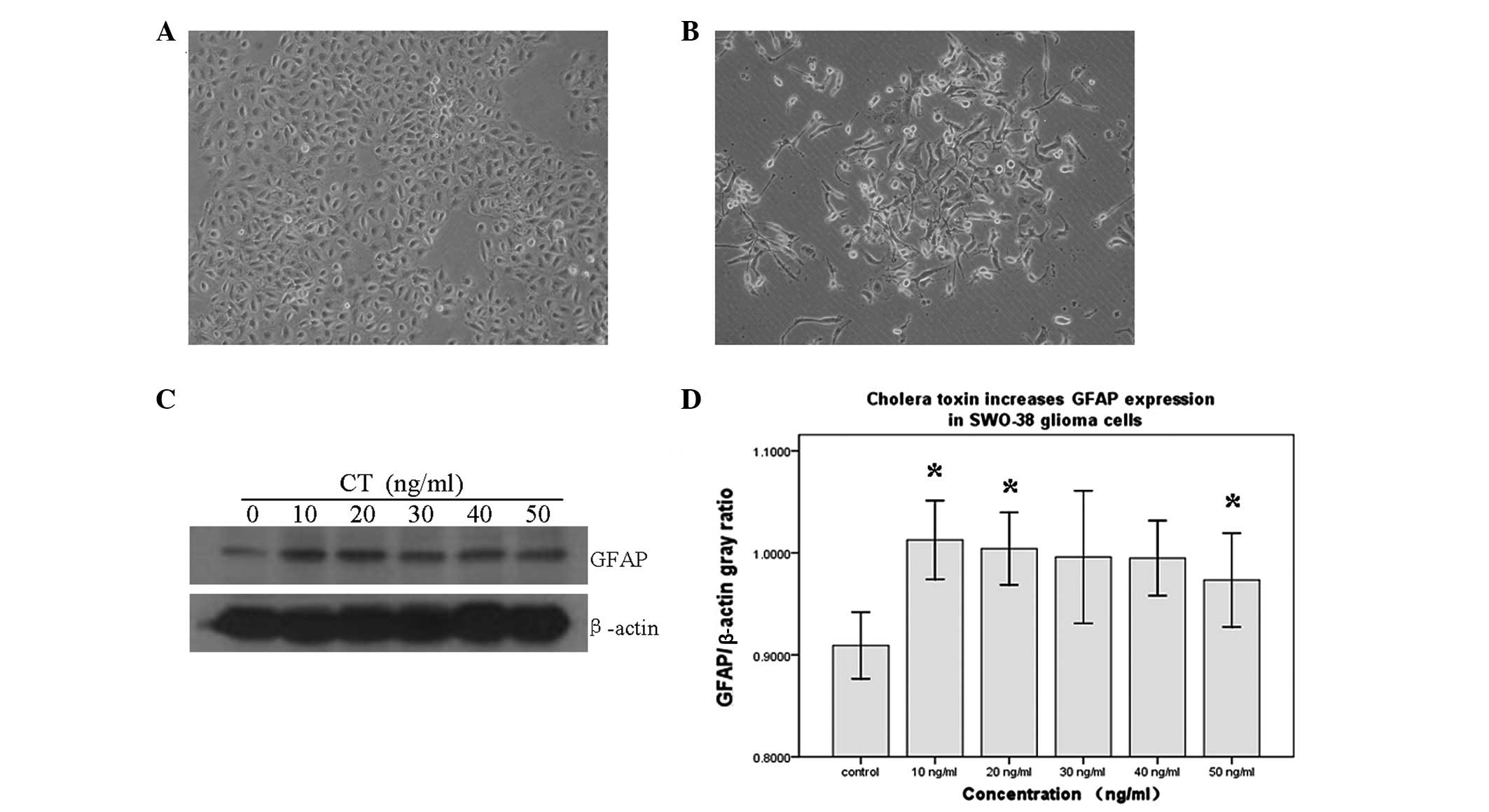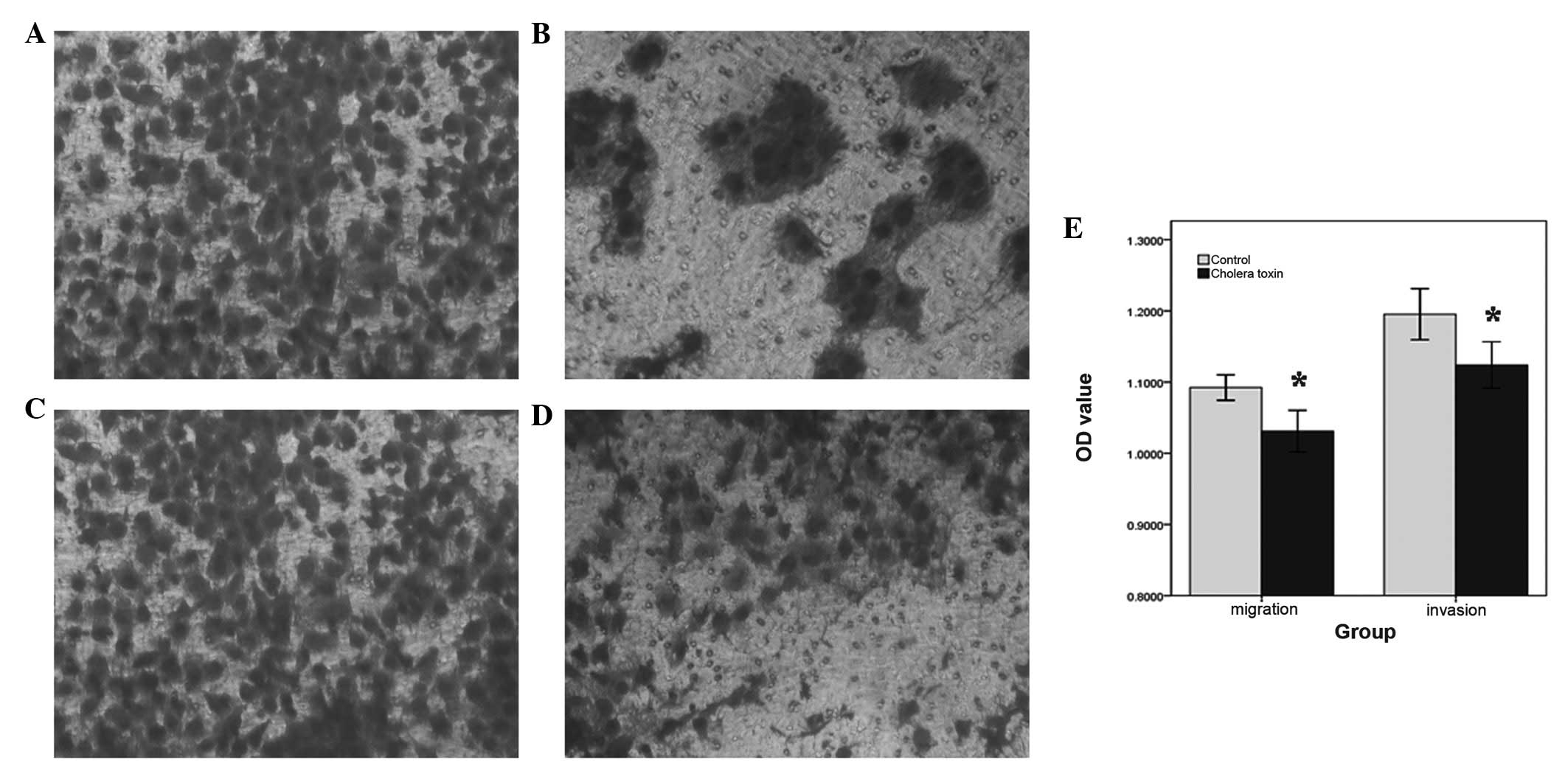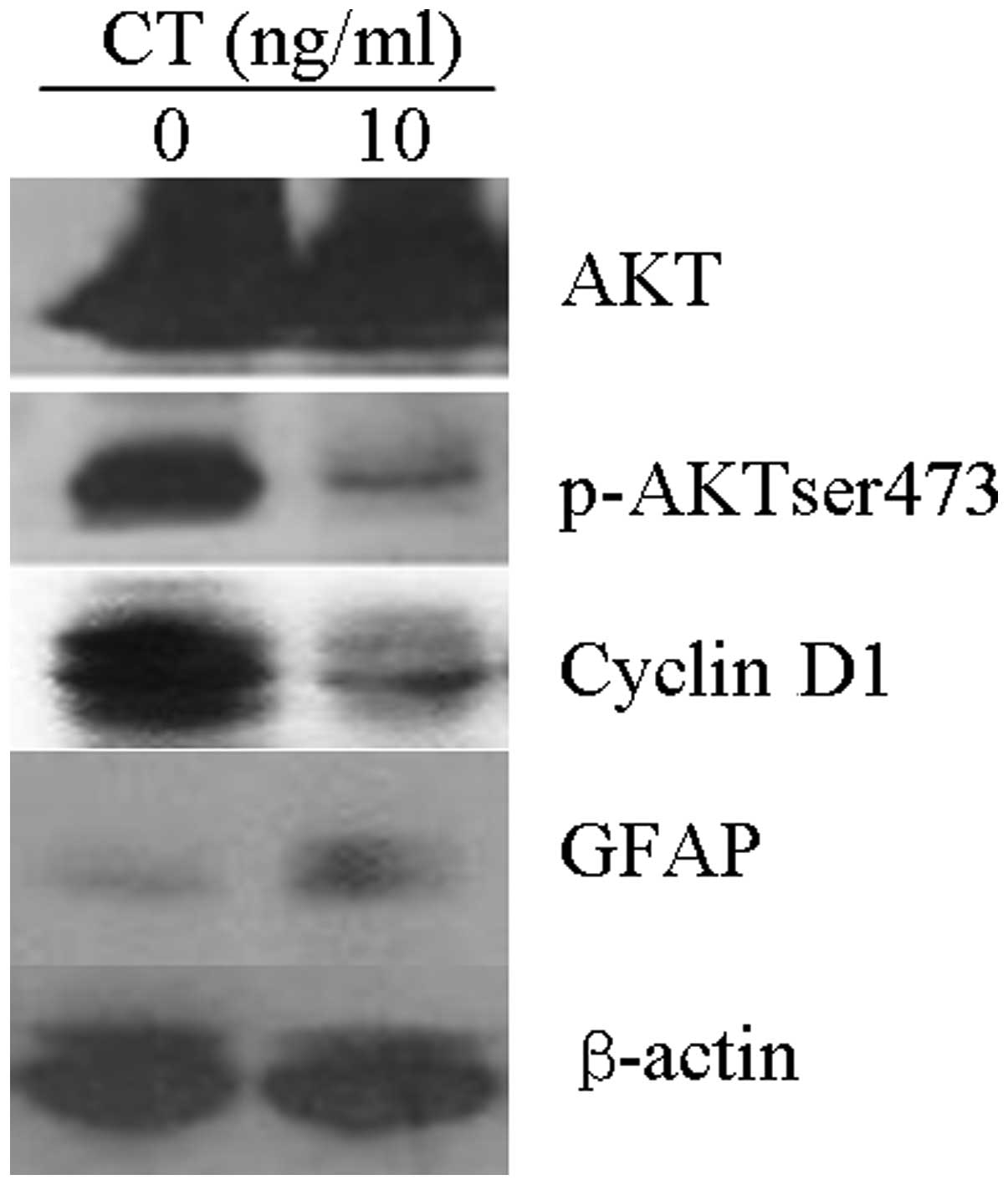Role of PTEN in cholera toxin-induced SWO‑38 glioma cell differentiation
- Authors:
- Ming Hua Wang
- Chen Li Lin
- Ji Jun Zhang
- Ze Ping Weng
- Ting Hu
- Qiang Xie
- Xue Yun Zhong
-
View Affiliations
Affiliations: Department of Pathology, Hainan Medical College, Haikou, Hainan 571101, P.R. China, Department of Pathology, Medical College of Jinan University, Guangzhou, Guangdong 510632, P.R. China, Department of Medical Oncology, Guangzhou Armed Police Force Hospital, Guangzhou, Guangdong 510632, P.R. China
- Published online on: April 18, 2013 https://doi.org/10.3892/mmr.2013.1434
-
Pages:
1912-1918
Metrics:
Total
Views: 0 (Spandidos Publications: | PMC Statistics:
)
Metrics:
Total PDF Downloads: 0 (Spandidos Publications: | PMC Statistics:
)
This article is mentioned in:
Abstract
Malignant gliomas persist as a major disease responsible for high morbidity and mortality rates in adults. Differentiation therapy has emerged as a promising treatment modality. Phosphatase and tensin homolog deleted on chromosome 10 (PTEN) gene function is commonly lost in primary gliomas, particularly in glioblastomas, and this is associated with tumor differentiation. PTEN gene deletion is one of the main molecular events in gliomas. In this study, we aimed to explore the effect and mechanisms of PTEN on cholera toxin (CT)‑induced SWO-38 glioma cell differentiation. It has been shown that transfection of the exogenous PTEN gene induces glioma cell differentiation; however, the underlying mechanism remains to be elucidated. Results of the present study showed that CT-induced SWO-38 glioma cell differentiation was characterized by morphological changes, the increased expression of glial fibrillary acidic protein (GFAP), an accumulation of cells in the G0/G1 phase of the cell cycle, the decreased expression of cyclin D1 and a decreased invasion and migration capacity. Silencing of the PTEN protein using RNA interference resulted in suppressed cell differentiation. Furthermore, inhibition of the PI3K/AKT pathway by the inhibitor LY294002 led to attenuated differentiation, while differentiation remained stable with the inhibition of the MAPK/ERK pathway by PD0325901. Thus, PTEN may be important in glioma cell differentiation.
View Figures |
Figure 1
|
 |
Figure 2
|
 |
Figure 3
|
 |
Figure 4
|
 |
Figure 5
|
 |
Figure 6
|
View References
|
1
|
Das P, Puri T, Jha P, et al: A
clinicopathological and molecular analysis of glioblastoma
multiforme with long-term survival. J Clin Neurosci. 18:66–70.
2011. View Article : Google Scholar : PubMed/NCBI
|
|
2
|
Stupp R, Mason WP, van den Bent MJ, et al;
European Organisation for Research and Treatment of Cancer Brain
Tumor and Radiotherapy Groups; National Cancer Institute of Canada
Clinical Trials Group. Radiotherapy plus concomitant and adjuvant
temozolomide for glioblastoma. N Engl J Med. 352:987–996. 2005.
View Article : Google Scholar : PubMed/NCBI
|
|
3
|
Leszczyniecka M, Roberts T, Dent P, Grant
S and Fisher PB: Differentiation therapy of human cancer: basic
science and clinical applications. Pharmacol Ther. 90:105–156.
2001. View Article : Google Scholar : PubMed/NCBI
|
|
4
|
Li Y, Yin W, Wang X, et al: Cholera toxin
induces malignant glioma cell differentiation via the PKA/CREB
pathway. Proc Natl Acad Sci USA. 104:13438–13443. 2007. View Article : Google Scholar : PubMed/NCBI
|
|
5
|
Li Y, Lu H, Huang Y, et al: Glycogen
synthase kinases-3beta controls differentiation of malignant glioma
cells. Int J Cancer. 127:1271–1282. 2010. View Article : Google Scholar : PubMed/NCBI
|
|
6
|
Situ R, Wang HH, Wang JH, et al:
Establishment of human brain malignant glioma cell line (SWO-38)
and observation of its biologic properties. Chin J Cancer.
6:235–238. 1987.(In Chinese).
|
|
7
|
Li J, Yen C, Liaw D, et al: PTEN, a
putative protein tyrosine phosphatase gene mutated in human brain,
breast, and prostate cancer. Science. 275:1943–1947. 1997.
View Article : Google Scholar : PubMed/NCBI
|
|
8
|
Tamura M, Gu J, Matsumoto K, et al:
Inhibition of cell migration, spreading, and focal adhesions by
tumor suppressor PTEN. Science. 280:1614–1617. 1998. View Article : Google Scholar : PubMed/NCBI
|
|
9
|
Ohgaki H and Kleihues P: Genetic pathways
to primary and secondary glioblastoma. Am J Pathol. 170:1445–1453.
2007. View Article : Google Scholar : PubMed/NCBI
|
|
10
|
Walsh DA and Van Patten SM: Multiple
pathway signal transduction by the cAMP-dependent protein kinase.
FASEB J. 8:1227–1236. 1994.PubMed/NCBI
|
|
11
|
Shu M, Zhou Y, Zhu W, et al: MicroRNA 335
is required for differentiation of malignant glioma cells induced
by activation of cAMP/protein kinase A pathway. Mol Pharmacol.
81:292–298. 2012. View Article : Google Scholar : PubMed/NCBI
|
|
12
|
Wang L, Liu F and Adamo ML: Cyclic AMP
inhibits extracellular signal-regulated kinase and
phosphatidylinositol 3-kinase/Akt pathways by inhibiting Rap1. J
Biol Chem. 276:37242–37249. 2001. View Article : Google Scholar : PubMed/NCBI
|
|
13
|
Downward J: Role of phosphoinositide-3-OH
kinase in Ras signaling. Adv Second Messenger Phosphoprotein Res.
31:1–10. 1997. View Article : Google Scholar : PubMed/NCBI
|
















